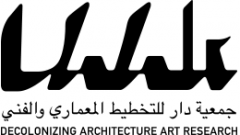Located between the domestic and the public sphere, Al-Madhafah, in Arabic, is the living room dedicated to hospitality. It has the potential to subvert the role of guest and host and give a different socio-political meaning to the act of hospitality. It seeks to mobilize the condition of permanent temporariness as an architectural and political concept able to challenge the binaries of inclusion and exclusion, public and private, guest and host. It activates the rights of temporary people to host and not to be eternally a guest, the right to claim life in the new destination but without feeling obliged to revoke the desire to belong to the life back home.
Al Madhafah is a project by DAAR: Sandi Hilal and Alessandro Petti in collaboration with Yasmeen Mahmoud, Ibrahim Muhammad Haj Abdulla, and Ayat Al-Turshan. A network of various living rooms activated simultaneously in five different locations: the house of Yasmine and Ibrahim (1) and The Yellow House in Boden supported by the Public Art Agency Sweden (2), ArkDes Museum in Stockholm (3) Fawwar refugee camp in south of the West Bank (4), and in the living room of Sandi and Alessandro in Stockholm supported by the Arab Fund for Art and Culture (AFAC) (5). The five spaces interact, inspire, and feed each constantly.
The living room in Permanent Temporariness (art and theory 2019)
